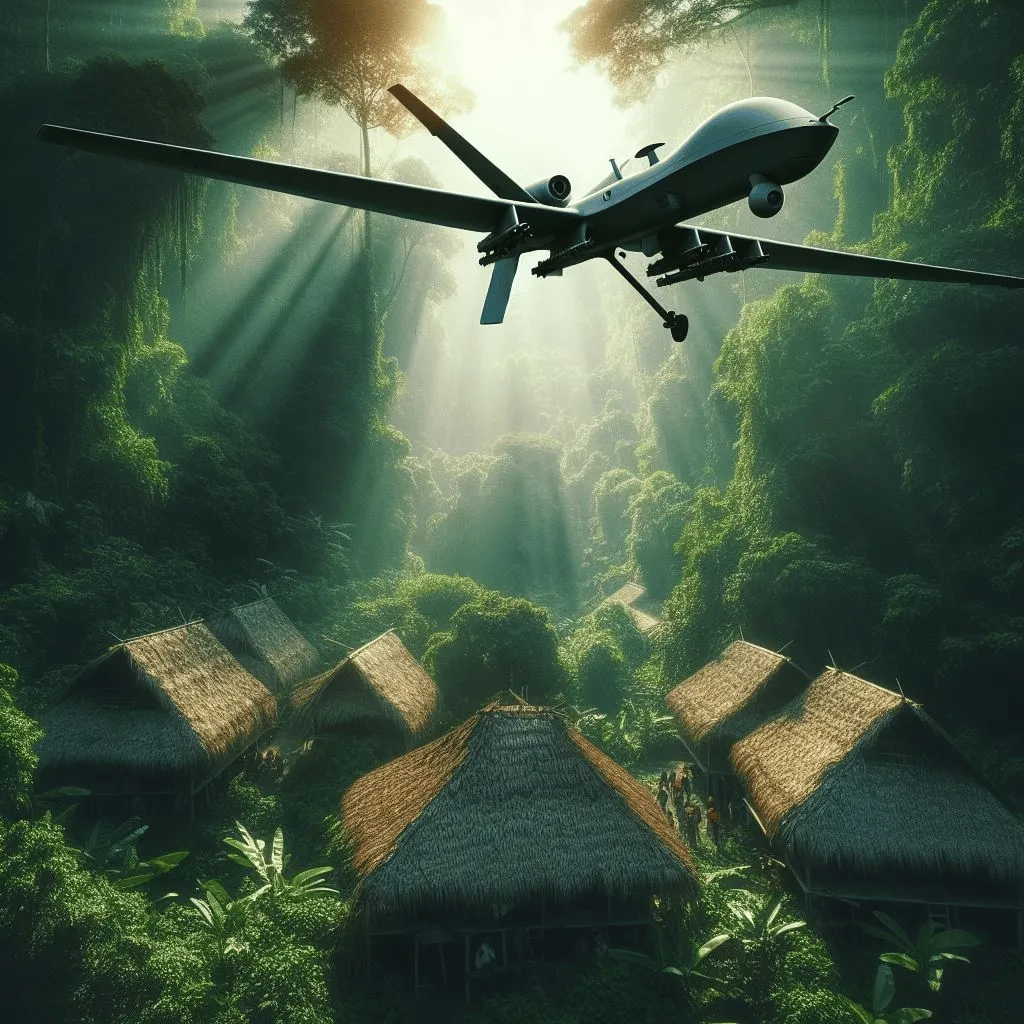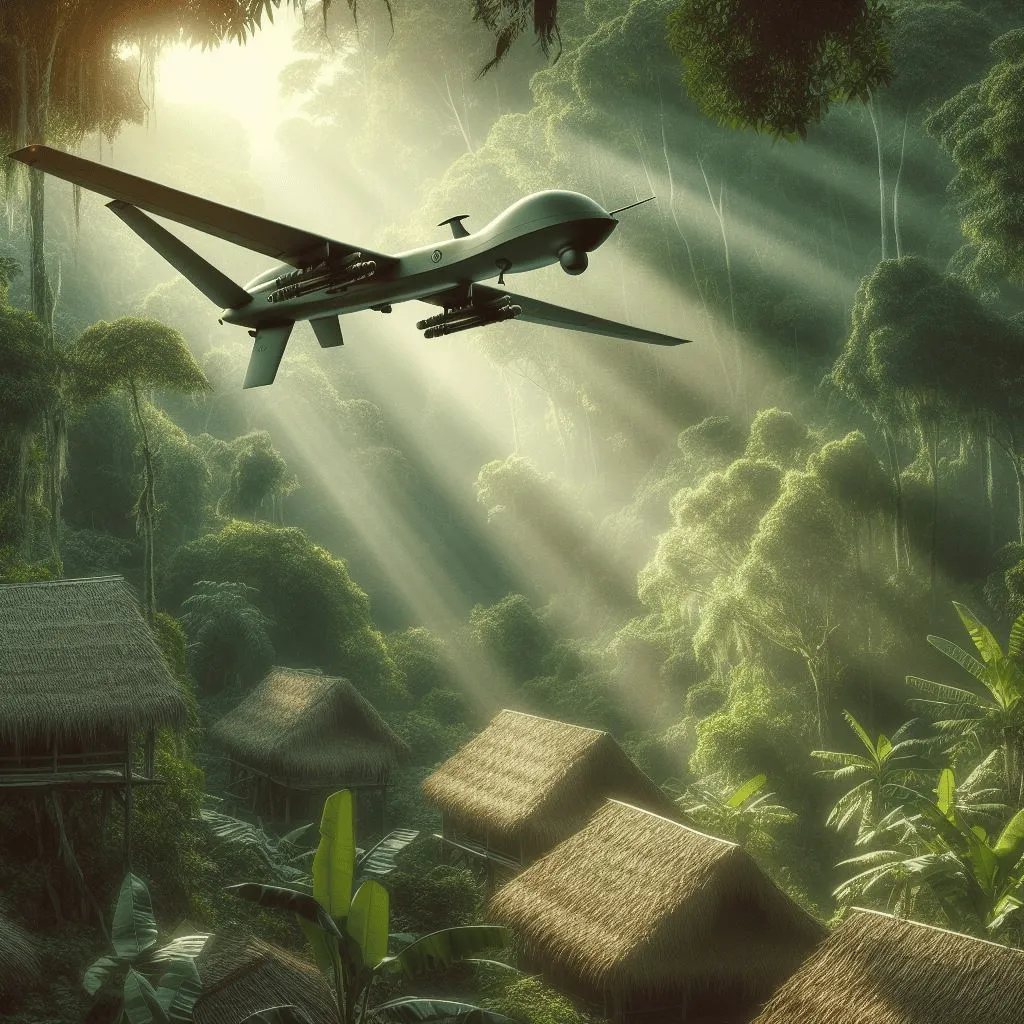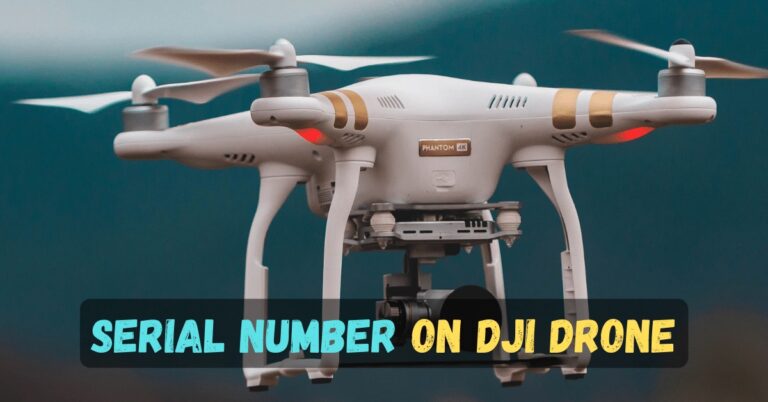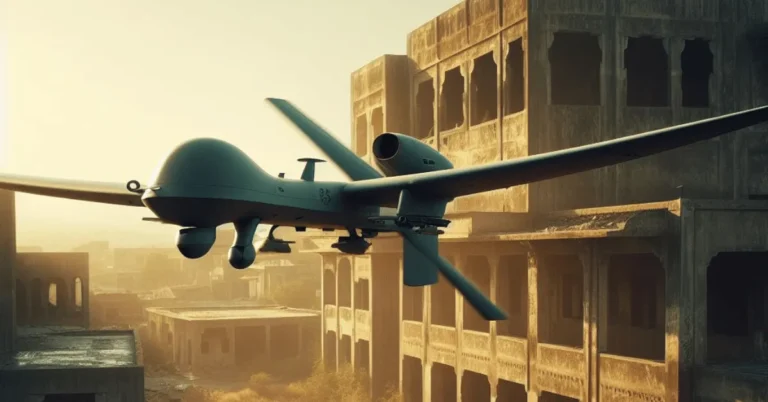How Accurate are Military Drones? (Updated 2024)

When it comes to military technology, few things capture the imagination quite like drones. These unmanned aerial vehicles have revolutionized warfare, allowing for precise strikes and reconnaissance without putting human lives at risk. But just how accurate are these high-tech military drones? Are they as precise as they seem in the movies, or is there more to the story?
Are military drones accurate?
The accuracy of military drones depends on several factors, making it difficult to give a definitive yes or no answer. Here’s a breakdown:
Factors influencing accuracy:
Drone type and capabilities: Different drones have varying levels of precision depending on their sensors, targeting systems, and weapon payloads. Smaller drones for surveillance may not be as accurate as larger armed drones designed for precision strikes.
Environmental conditions: Weather, wind, and terrain can affect drone navigation and targeting, potentially impacting accuracy.
Human factors: The skill and experience of the drone operator can play a significant role in accuracy, as well as fatigue and decision-making under pressure.
Target type and location: Stationary targets in open areas are easier to hit than moving targets or those obscured by cover.

Arguments for accuracy:
Advanced technology: Modern military drones are equipped with sophisticated sensors like electro-optical cameras, radar, and laser targeting systems, which can significantly improve accuracy compared to traditional methods.
Precision munitions: Many drones use laser-guided or GPS-guided munitions, further increasing the likelihood of hitting the intended target.
Reduced collateral damage: Compared to other weapons systems like artillery or airstrikes, drones can potentially minimize civilian casualties due to their targeted nature.
Arguments against accuracy:
No guarantee of precision: Even with advanced technology, factors like human error, weather, and target complexity can lead to missed strikes or unintended consequences.
Risk of civilian casualties: Despite claims of precision, drone strikes have resulted in civilian casualties due to misidentification or technical malfunctions.
Ethical concerns: The use of drones raises ethical concerns about remote warfare, accountability, and potential for misuse.

Overall:
While military drones have undoubtedly improved in accuracy over time, it’s important to remember that they are not foolproof. Their effectiveness depends on a range of factors, and they are not without risks and ethical considerations.
It’s crucial to evaluate each situation critically and consider all perspectives before making any definitive claims about the accuracy of military drones.
Read More: Why Drones Should Be Banned?
How accurate are military drones?
Military drones are equipped with advanced targeting systems and precision-guided munitions, making them highly accurate in hitting their intended targets.
They are capable of conducting surveillance, reconnaissance, and even carrying out targeted strikes with great precision.
The accuracy of military drones is primarily attributed to their advanced sensors and sophisticated software.
They are equipped with high-resolution cameras, infrared sensors, and other cutting-edge technologies that allow them to gather real-time intelligence and identify targets with great accuracy.
Furthermore, military drones are often armed with precision-guided munitions, such as laser-guided bombs or missiles, which have the ability to hit their targets with pinpoint accuracy.
These munitions can be guided by the drone’s onboard systems or by operators on the ground, ensuring precise and effective strikes.

It is important to note that while military drones are highly accurate, they are not infallible. Factors such as weather conditions, technical malfunctions, or human errors can still affect their performance.
However, advancements in technology and continuous improvements in drone systems have significantly increased their accuracy and reliability.
In conclusion, military drones are incredibly accurate due to their advanced sensors, precision-guided munitions, and sophisticated software.
They have proven to be invaluable assets in modern warfare, providing enhanced situational awareness and the ability to strike targets with precision.
As technology continues to evolve, we can expect even greater accuracy and effectiveness from military drones in the future.
Read More: Benefits of Drone Mapping (2023)
Which country has the best military drones?
Military drones have emerged as a game-changing technology, revolutionizing warfare and enhancing the capabilities of armed forces around the world.
While many countries have invested in drone technology, some have made significant strides in developing advanced and effective military drones.
The United States stands out as a pioneer, operating an extensive fleet that includes renowned drones like the Predator and Reaper. Other notable contributors include China, Israel, and Turkey, each showcasing impressive developments in military drone technology.

United States
The United States has been at the forefront of military drone development for several decades. With a vast defense budget and cutting-edge research facilities, the U.S. has produced highly advanced drones like the Predator and Reaper.
These drones have proven their effectiveness in surveillance, reconnaissance, and precision strikes.
Israel
Israel is another country that has made remarkable progress in military drone technology. Known for its innovative defense industry, Israel has developed drones like the Heron and Hermes, which have been deployed in various conflicts.
These drones are known for their long endurance, advanced sensors, and impressive target acquisition capabilities.
China
China has rapidly emerged as a major player in the field of military drones. With a focus on technological advancement, China has developed drones like the Wing Loong series, which are widely used for surveillance and strike missions.
China’s drones are known for their affordability, versatility, and increasingly sophisticated capabilities.
Turkey
Turkey has also made significant strides in military drone technology, particularly with its Bayraktar TB2 drone.
This drone has been successfully used in various conflicts and has showcased its effectiveness in surveillance and precision strikes.
Turkey’s investment in drone technology has positioned it as a key player in the global defense industry.

Overall
While the United States, Israel, China, and Turkey are among the leading countries in military drone technology, it is important to note that many other nations are also investing in this field.
As technology advances and new innovations emerge, the landscape of military drones is likely to evolve further, with more countries contributing to this transformative technology.
Read More: Can You See Military Drones in The Sky? (Explained)
How technologically advanced are military drones?
Military drones showcase remarkable technological advancements, revolutionizing warfare. Drones provide real-time information on targets’ positions, enhancing Reconnaissance, Surveillance, and Target Acquisition (RSTA).
These sophisticated machines have come a long way since their inception, and their technological advancements continue to push the boundaries of what is possible.
1. Autonomous Capabilities
One of the most significant advancements in military drones is their ability to operate autonomously.
With advanced artificial intelligence and machine learning algorithms, drones can now navigate, identify targets, and make decisions without constant human intervention. This allows for increased efficiency and reduces the risk to human lives.
2. Sensor Technology
Military drones are equipped with a wide range of sensors that provide valuable information to operators in real-time.
These sensors include high-resolution cameras, infrared sensors, radar systems, and even chemical and biological detectors.
This data allows military personnel to gather intelligence, monitor enemy movements, and assess potential threats more effectively.

3. Communication and Connectivity
Drones are now capable of seamless communication and connectivity with other military assets. They can relay information to ground control stations, share data with other drones, and even communicate with crewed aircraft. This integration enhances situational awareness and enables coordinated operations.
4. Stealth and Survivability
Advancements in stealth technology have made military drones harder to detect and track. They can operate silently and blend into the environment, making them less vulnerable to enemy countermeasures.
Additionally, drones are now equipped with self-defense mechanisms, such as electronic warfare systems and anti-aircraft defenses, further increasing their survivability.
5. Range and Endurance
Military drones now have extended range and endurance capabilities. They can fly for longer durations and cover vast distances, allowing for extended surveillance and strike missions.
This increased range also enables drones to operate in remote and hostile environments, providing valuable support to military operations.
Read More: Can Radar Detect Drones? (Surprising Truths & 8 Tips)
What are the future trends in military drones?
The future of military drones is poised for significant transformation, driven by emerging technologies.
AI integration is shifting towards more automated drone warfare, with human-machine collaboration at every targeting stage.
Rapid growth in the drone market, fueled by high military demand, is a notable trend. Drones will revolutionize warfare through improved Reconnaissance, Surveillance, and Target Acquisition (RSTA), cost reduction, and increased efficiency.
Over 100 militaries possess drone capabilities, underscoring the proliferation trend. The evolving landscape of drone warfare, highlighted by the potential to revolutionize military strategy, is a key aspect of future trends.

Understanding these trends is crucial for anticipating the trajectory of military drone development.
What is the comparison of different countries’ military drones?
Comparing different countries’ military drones across the board is challenging due to the diverse nature of these programs and varying priorities. However, I can offer some insights based on different categories:
| Category | United States | Israel | China | Europe |
|---|---|---|---|---|
| Leading Programs | Predator/Reaper, Global Hawk, MQ-9 Grey Eagle | Heron, Harpy, IAI Harop | Wing Loong II, CH-6 | Dassault nEUROn, Patroller |
| Strengths | Armed combat, surveillance, long-range recon | Loitering munitions, EW, intelligence gathering | Long-range recon, armed combat, swarm technology | Collaborative development, intelligence gathering |
| Specific Drones | Reaper, Global Hawk, Grey Eagle | Heron TP, Harpy, Harop | Wing Loong II, CH-6, GJ-2020 | nEUROn, Patroller, Coyote Drones |
| Ethical concerns | Civilian casualties in drone strikes | Targeting procedures and transparency | Civilian casualties, lack of transparency | Varying across different nations |
| Notes | Advanced tech, extensive operational experience | Strong tactical focus, innovative tech | Rapidly advancing, large program | Emphasis on collaboration, intelligence sharing |
Final Thoughts – How Accurate are Military Drones?
Military drones represent a groundbreaking evolution in warfare technology, offering unprecedented capabilities in reconnaissance, surveillance, and targeted strikes.
Their accuracy is a result of advanced sensors, precision-guided munitions, and continuous technological advancements.
Despite their effectiveness, it’s crucial to acknowledge the complexities and ethical considerations surrounding their use.
FAQs
Military drones have autonomous capabilities, thanks to advanced artificial intelligence and machine learning. While they can operate autonomously to some extent, human control is often maintained for critical decision-making.
The accuracy of military drones depends on various factors, including drone type, environmental conditions, human factors, and the type and location of the target. Advanced technology, precision munitions, and reduced collateral damage are arguments for accuracy, but factors like weather and human error can still impact performance.
Military drones, equipped with precision-guided munitions and advanced sensors, aim to minimize civilian casualties compared to traditional weapons systems. However, despite claims of precision, there have been instances of civilian casualties due to misidentification or technical malfunctions.
The United States, Israel, China, and Turkey are among the leading countries in military drone technology. Each has developed advanced drones with unique capabilities, contributing to the transformative landscape of modern warfare.
The future of military drones involves increased AI integration, automated warfare, and a growing drone market. Anticipated trends include enhanced Reconnaissance, Surveillance, and Target Acquisition (RSTA), cost reduction, and expanded efficiency. Over 100 militaries worldwide possess drone capabilities, indicating a widespread adoption trend.







